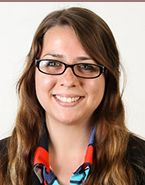Radiology Research: The Long Road Back to a Pre-Pandemic Normal
As labs begin to ramp up, researchers brace for another potential shutdown


It goes without saying that the COVID-19 pandemic has disrupted nearly every aspect of our lives — and radiologic research is no exception. When the pandemic struck in March and much of the country shut down, so too did imaging research.
“For nearly three months, academic medical centers and universities halted all non-essential research, potentially resulting in a loss of one to two years of productivity,” said Achala Vagal, MD, radiology professor and vice chair of research at the University of Cincinnati Medical Center.
Dr. Vagal is the corresponding author of the Radiology article, “The Impact of the COVID-19 Pandemic on the Radiology Research Enterprise: Radiology Scientific Expert Panel,” describing how several academic radiology research programs managed during COVID-19 shutdowns. But what about post-shutdown?
“As lockdowns are being lifted and researchers cautiously head back into the lab, we’re getting our first glimpse of what the ‘new normal’ for radiologic research might look like,” Dr. Vagal explained. “One thing for sure is that it will likely be a long time before we get back to anything close to a pre-pandemic ‘normal’.”
For example, Dr. Vagal noted that although the University of Cincinnati reopened its research on June 1, their labs are only operating at 50% occupancy, with a significant amount of work still happening remotely. All principal investigators and research vice chairs are required to create detailed reentry plans for protecting personnel. For those projects and clinical trials that plan to enroll patients, an additional COVID-19 plan must be submitted outlining how participants will be protected.
The Looming Shadow of Another Shutdown
Even as some research ramps up, the significant spike in COVID-19 cases happening in many parts of the country is a looming shadow over the research community.
“It’s extremely difficult to start an experiment when there is a very real risk that you’ll have to ramp back down,” said Gary Luker, MD, editor of Radiology: Imaging Cancer and co-author of the journal’s editorial, “Transitioning to a New Normal after COVID-19: Preparing to Get Back on Track for Cancer Imaging.”
This risk of another shutdown is particularly challenging for animal studies said Adeline Boettcher, PhD, scientific editor of RSNA subspecialty journals and co-author of the editorial.
“Many animal experiments are planned to last from two to eight weeks,” Dr. Boettcher said. “But during a pandemic, a lot can happen in this time span, making it exceptionally difficult to plan these kinds of experiments.”
Getting Patients Back in the Clinic
Another immediate challenge is getting patients to come back into a hospital setting for clinical studies. At the University of Michigan, as with many other academic centers, studies involving older, high-risk participants cannot resume unless the study has a direct, immediate benefit to the individual, Dr. Luker said.
However, clinical studies of new imaging methods typically do not provide a direct benefit to a participant even though the research may be tremendously beneficial in the future.
“This means many clinical imaging studies cannot start again or must exclude older participants and others regarded as high risk for COVID-19,” Dr. Luker said. “For imaging studies in cancer and other diseases predominantly affecting older people, this means we have a much smaller population of subjects that we can recruit from.”
To counter this, Dr. Boettcher notes that some facilities are developing targeted messaging that highlights the importance of imaging research and emphasizes the cleanliness of facilities. “You want to make sure patients feel safe going into these facilities, and that’s increasingly difficult to do — especially with cases continuing to spike,” she explained.
Social distancing guidelines present another challenge, as keeping people six feet apart means fewer people in a lab and thus fewer studies being done. It also poses challenges to training new researchers. “How do we train people to do research when they can’t be within six feet of each other and, in some cases, can’t even be in the same room because of space restrictions?” Dr. Luker asked.
Funding and staffing are two more issues of concern. “Many sources of revenue have either gone away or have decreased significantly, which will have a major impact on cancer research, cancer imaging research and research in general,” Dr. Boettcher said.
“With many institutions not hiring, or even letting junior faculty members go, there’s a concern that there will be a shortage of imaging scientists,” Dr. Luker said. “This will clearly affect the future of clinical practice and patient care as many important discoveries will either not be made or will be significantly delayed.”
Research Community Bands Together
With all these challenges, concerns and unknowns, what is the future of imaging research?
“To be honest, I don’t think any of us knows what all the pieces are or what the future will hold,” Dr. Vagal said. “The only thing we can say for certain is that everything is very uncertain.”
But, according to Drs. Vagal and Luker, it is in this uncertainty that radiology can find a silver lining.
According to Dr. Vagal, there’s been so much uncertainty surrounding COVID-19 that it has prompted the research community to collaborate very closely and effectively, often in new ways.
“The result is a remarkably quick, and often global, dissemination of science, with the number of papers, sharing of scientific findings and open access to journals reaching unprecedented levels,” she said. “This is the future of imaging research.”
“Instead of the pre-pandemic practice of everybody keeping their data to themselves, I think we’re seeing more of a sense of community and shared purpose amongst the research community,” Dr. Luker said. “I think everyone realizes that the only way we’re going to overcome this problem and ‘get back to normal’ is by working together.”
Access a video of Dr. Vagal discussing factors impacting radiology's return to research:
For More Information
Access the Radiology study, “The Impact of the COVID-19 Pandemic on the Radiology Research Enterprise: Radiology Scientific Expert Panel."
Access the Radiology: Imaging Cancer editorial, “Transitioning to a New Normal after COVID-19: Preparing to Get Back on Track for Cancer Imaging."
Access a video with Drs. Luker and Boettcher, discussing their Radiology: Imaging Cancer editorial.